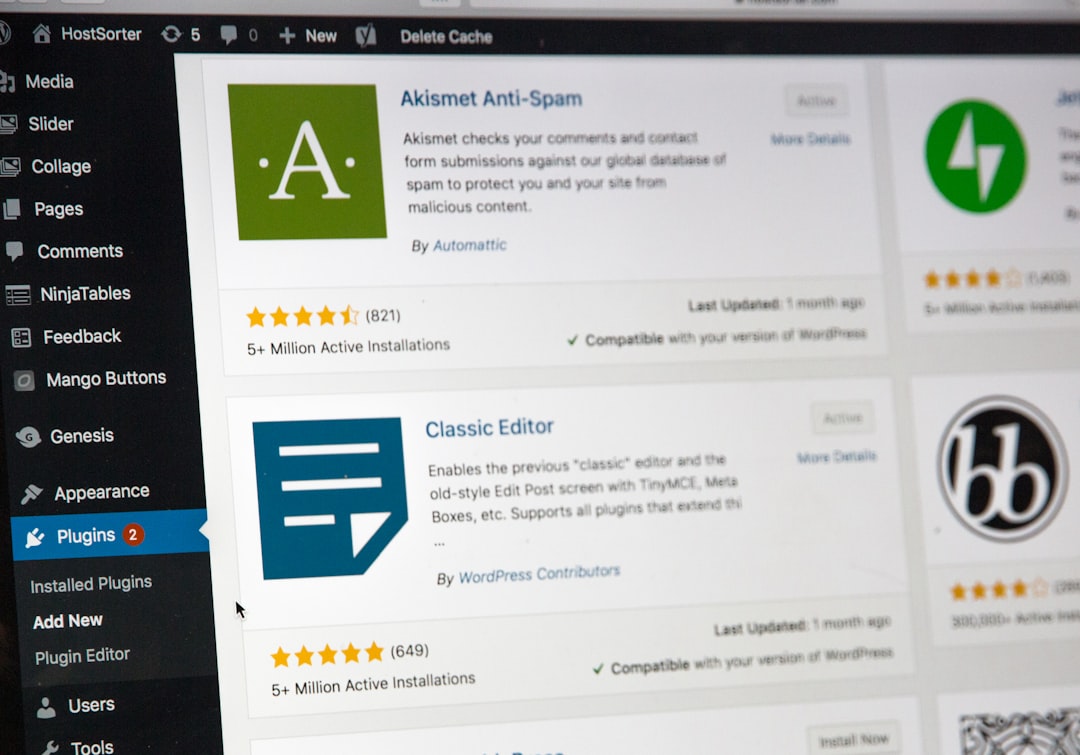When it comes to managing and securing your WordPress website, the tools and methods you choose can make all the difference. While many WordPress users rely heavily on browser-based dashboards and standard FTP for file management, these traditional approaches leave significant security gaps. One of the most effective ways to secure your WordPress installation and gain greater control is by using SSH (Secure Shell).
SSH is a cryptographic network protocol that provides a secure channel for operating network services securely over an unsecured network. In the context of WordPress, SSH allows webmasters and developers to interact with their server environment more safely and efficiently. If you’re managing a serious or large-scale WordPress site, or if you’re concerned about cyber threats, implementing SSH should not be optional—it should be essential.
Table of Contents
What Is SSH and How Does It Work?
SSH, short for Secure Shell, is a protocol used to access and manage remote servers over a secure channel. Unlike FTP, which transmits data (including login credentials) in plaintext, SSH encrypts all communication. This makes it virtually impossible for hackers to intercept sensitive information.
When you log in to your server via SSH, you gain access to a command-line interface where you can execute commands, edit files, install updates, manage permissions, and more—all remotely and with enriched functionalities.

Why SSH Is Crucial for WordPress Security
WordPress powers over 40% of all websites on the internet, making it a prime target for attackers. Many of these attacks happen due to weak server-level configurations, insecure file operations, and outdated software. SSH provides mechanisms to mitigate these risks significantly.
1. Encrypted Communications
Using SSH ensures all data transmitted between your client and the server is encrypted. Unlike FTP, which does not offer default encryption, SSH eliminates the risk of credential and data exposure.
2. Secure File Transfers via SFTP
SSH integrates with SFTP (SSH File Transfer Protocol), allowing you to upload, download, and manipulate files securely. With SFTP, data is transferred through an encrypted tunnel, making it safe from interception—a far cry from standard FTP.
3. Authentication via SSH Keys
One of the biggest strengths of SSH is the use of public and private SSH keys for authentication. Unlike passwords, these keys are nearly impossible to brute-force due to their complexity. Once configured, they can also eliminate the need to type your credentials repeatedly.
4. Direct Server Access for Patch Management
Timely software updates are crucial for WordPress security. With SSH, you can directly apply security patches to your core files, themes, and plugins. This bypasses the need to rely only on the WordPress dashboard, which might itself be inaccessible during certain issues or attacks.
5. Monitoring Suspicious Activity
With SSH access, you’re able to inspect real-time logs, monitor running processes, and detect malicious scripts that may not yet be visible through the WordPress interface. This level of control gives you a significant advantage in threat detection and mitigation.
Enhanced Control with SSH
Beyond security, SSH offers unparalleled control over your hosting environment. This includes improved efficiency, automation, and direct access that simplifies complex tasks.
1. Command-Line WordPress Management via WP-CLI
WP-CLI is a command-line tool that allows users to manage WordPress installations without using a web browser. Tasks such as plugin updates, database management, regenerating thumbnails, and user management can all be done in seconds through SSH access.
2. Efficient Troubleshooting
When your site goes down or becomes inaccessible via the frontend or admin panel, SSH remains your ultimate backdoor. You can restart services, disable faulty plugins, or restore backups—all from the shell prompt.
3. File and Permission Management
Incorrect file permissions are a common source of security vulnerabilities. With SSH, you can instantly check and modify permissions to ensure your files and directories aren’t exposed to unauthorized users.

4. Automation and Scripting
Routine tasks like database backups, cache clearing, or log file rotations can be automated using shell scripts. SSH allows you to schedule and run such tasks quickly through cron jobs or custom scripts, improving operational efficiency.
SSH vs FTP and cPanel
Many WordPress users rely on FTP clients or graphical control panels like cPanel for file management. While these tools are easier for beginners, they lack the depth and security offered by SSH.
- FTP: Insecure by default, with basic functionalities and no encryption unless secured through FTPS, which still lacks the power of SSH + SFTP.
- cPanel: User-friendly but limited when advanced customization or troubleshooting is required. Graphical interfaces can also obscure critical operations and introduce misconfigurations.
- SSH: Secure, efficient, scriptable, and provides root-level access for complete environment control.
For any serious or growing WordPress operation, especially in a VPS or dedicated hosting environment, SSH quickly becomes not just preferable—but necessary.
Common Uses of SSH in WordPress
Below are some of the most common and valuable SSH use cases for WordPress administrators and developers:
- Installing and updating WordPress core, themes, and plugins via WP-CLI
- Performing regular database backups with automated scripts
- Managing version control through Git directly on the server
- Setting up staging environments using command-line tools
- Analyzing server logs for debugging or security audits
How to Set Up SSH for Your WordPress Site
Setting up SSH can be accomplished in a few straightforward steps, depending on your hosting provider. Here’s a simplified overview:
- Generate SSH Key Pair: On your local machine, generate a key pair using
ssh-keygen. This will create a public key and a private key. - Add Public Key to Server: Upload your public key to the
~/.ssh/authorized_keysfile on your web server. - Test Your Connection: Connect to the server using
ssh user@hostnameand verify successful access. - Disable Password Authentication (optional but recommended): Enhance security by disabling password-based logins, forcing the use of key pairs only.
Make sure to store your private key securely and never share it with others. You may also want to enable two-factor authentication for additional layers of security where supported.
Conclusion
Using SSH to manage your WordPress site provides much more than login encryption—it gives you complete control, increased efficiency, and the peace of mind that your digital asset is protected through industry-standard practices. Whether you’re a site administrator, developer, or owner, integrating SSH into your daily workflow can drastically reduce your exposure to vulnerabilities and improve the management of your server environment.
With cyber threats evolving and the costs of breaches escalating, neglecting secure protocols like SSH is no longer an option. Embrace SSH as a secure, versatile, and professional tool to elevate the way you handle your WordPress website.
Your WordPress site deserves more than just a pretty face—it deserves a fortress behind it.




